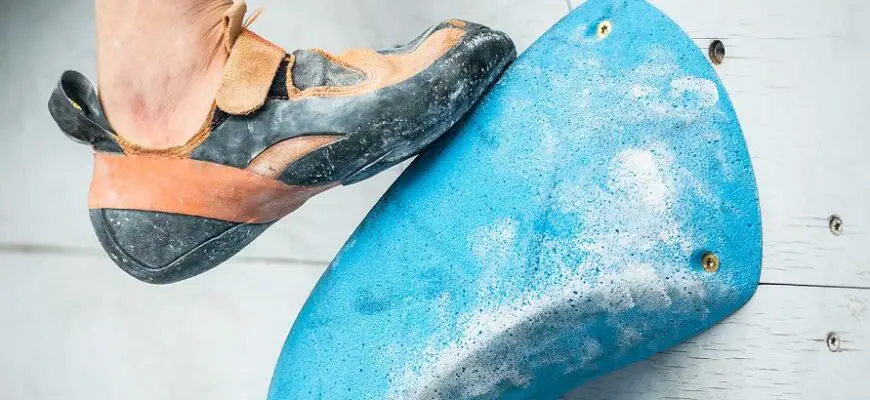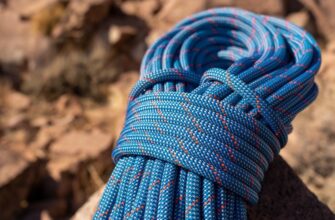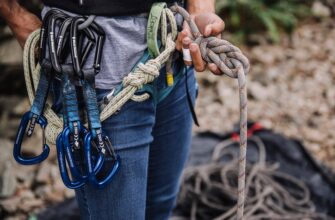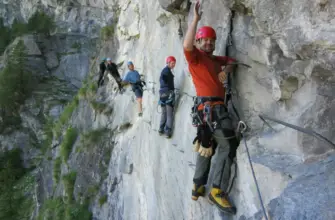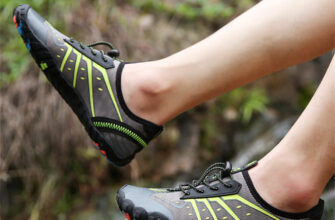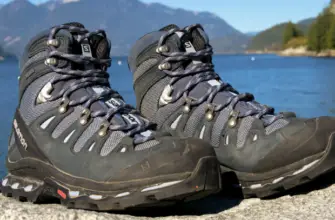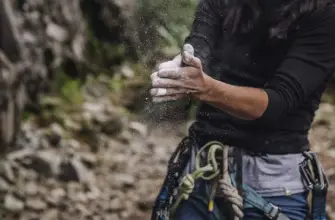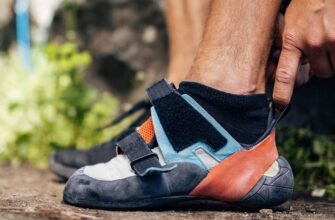Whether you climb frequently or infrequently, outdoors or in climbing gyms, your rock climbing shoes will probably sustain some damage. Climbing shoes wear out, and your new shoes become thin, torn, or even ripped after prolonged use. You will need to replace your shoes once the damage is beyond repair, which can happen sooner than you think!
It’s crucial to know when to resole climbing shoes. Your climbing shoes can last longer if you adhere to a good maintenance schedule, such as keeping them dry and clean and mending them as necessary.
When do you firmly believe that instead of buying new shoes you can resole your favorite pair of climbing shoes? Let’s list a few of the crucial indicators that your own shoes need to be resoled.
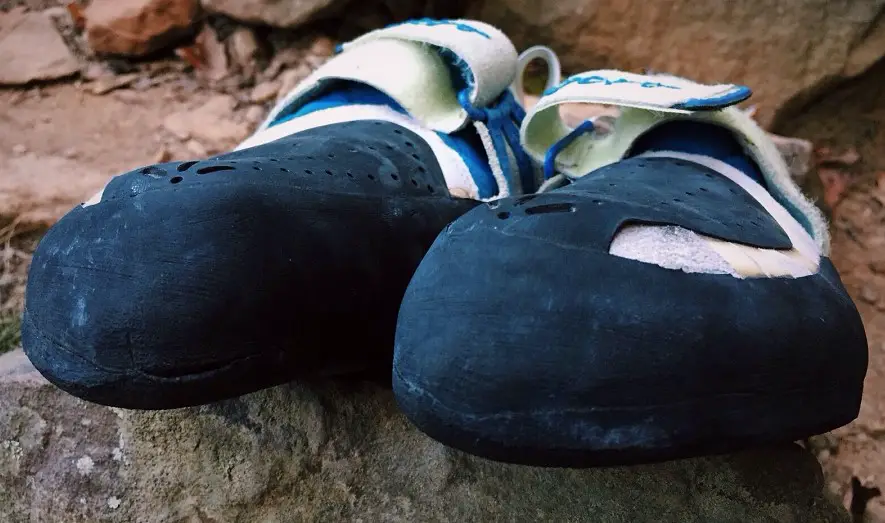
- What resoling climbing shoes means
- Why you should have your shoes resoled
- Several types of climbing shoe resoling: 1/3, half sole, and full
- How do you know when your climbing shoes need to be resoled?
- How often should I get my climbing shoes resoled?
- A reminder for all climbers
- How late is too late to resole climbing shoes?
- How many times may a pair of climbing shoes be resoled?
- How expensive is resoling climbing shoes?
- How to resole rock climbing shoes
- Climbing shoe rubber
- Something to think about
- Shoe management beta
- How long does it take to resole climbing shoes?
- Can I resole my climbing shoes myself?
- What about the upper materials?
- In conclusion
What resoling climbing shoes means
We must first know what to look for in order to determine when to resole climbing shoes. A shoe has two components.
The entire bottom of the shoe is covered with the rubber sole, which is made to wear away from contact with holds, rocks, or the wall.
Climbing shoe rand, on the other hand, is a thinner piece of rubber that supports and shields the top material. It’s not made to be as durable as the sole and is easily breakable.
Regular care for a pair of climbing shoes includes a resole. It is the procedure of replacing the rubber sole’s worn-out sections. The smallest area, just below the big toe’s tip, is where rubber tends to wear down most frequently. The visible line where the sole is attached to the rand will regress and look to “dip” as the sole wears away.
This line may occasionally even seem flimsy.
Some of the rubber rand that covers the toes is replaced during a rand repair. Repairs to this area of the shoe have the potential to minimize the number of resoles while also affecting the shoe’s shape, comfort, and performance.
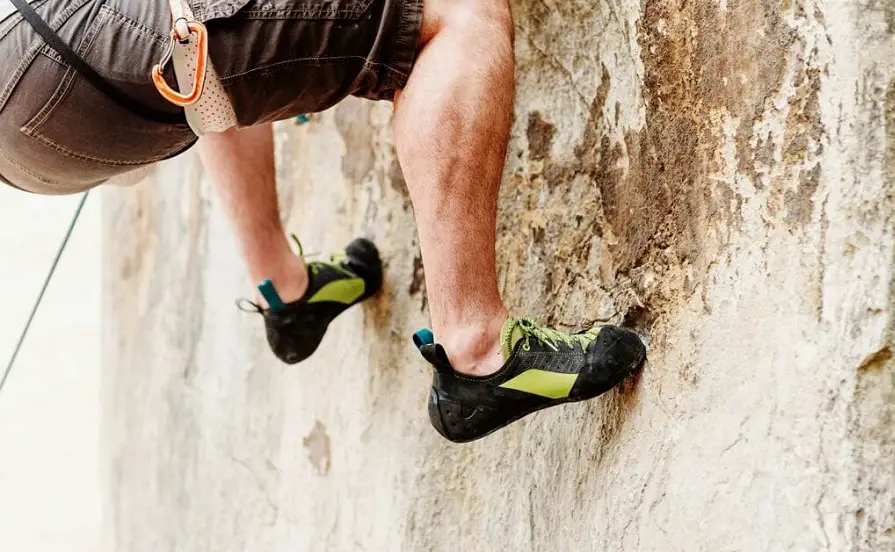
Why you should have your shoes resoled
Whether you climb frequently or simply occasionally, the rubber in your worn shoes will eventually start to deteriorate. One of the most frequent locations where you will encounter this through thinning and perforations is the toe box. Many climbers will continue to climb despite these problems without trying to get the shoes resoled, which results in total degradation.
The shoe’s toes and sides are surrounded by a thin rubber band known as the rand. It is located between the upper and the sole. The rand’s function is to safeguard the overlying substance. Although the rand rubber is less exposed than the sole, damage can nevertheless occur here.
The leather or synthetic covering on top of a climbing shoe is known as the upper. Everything is held together and connected by this component. A pair of climbing shoes can be beyond repair if the upper has sustained substantial damage, in which case you will need to replace it. Of course, small holes can easily be filled.
Stop climbing in your climbing shoe if the sole or rand grow of the climbing shoe is thin and worn, and if necessary, think about resoling or replacing them. To resole climbing shoes typically saves money, is more environmentally friendly, and takes less waiting time until the shoes are once again functional.
Several types of climbing shoe resoling: 1/3, half sole, and full
Climbing shoes often only show wear in the first few inches of the foot and at the toes. This means that typically only the front portion needs to be replaced. A third- or half-resole is what it’s known as when replacing just that portion of the shoe (generally half but refers to the same thing). This kind of resole is by far the most prevalent. When the entire sole is removed and entirely changed, it is referred to as a full resole.
It’s possible just to check toe caps and pay for toe cap replacement or replace the entire sole of a climbing shoe with a full replacement piece when using a full sole, although it’s more typical to have a third or half of the sole completed. A full resole is an option, however, it can cost more. Depending on the types of climbing shoe resoles, individual or store providing it, all of this advice and pricing varies.
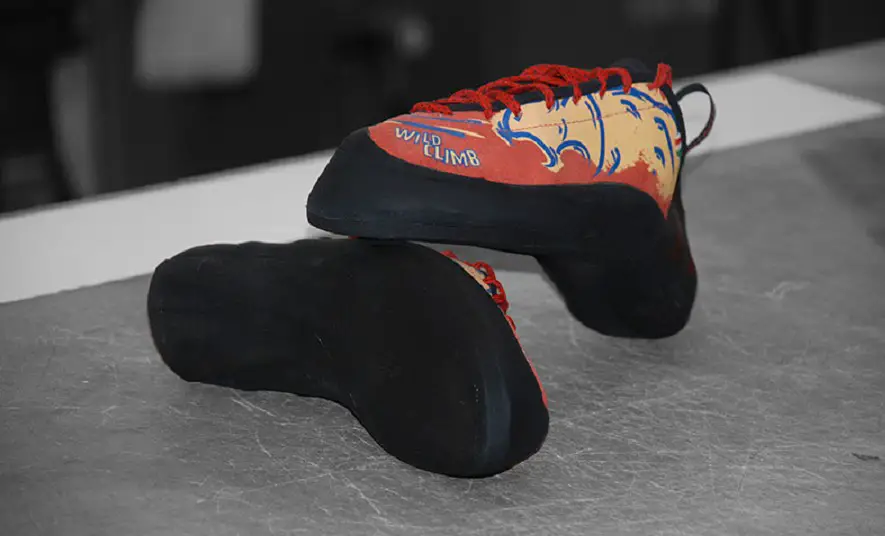
How do you know when your climbing shoes need to be resoled?
Knowing when to resole climbing shoes is crucial. If you have lightly used shoes, you can skip this step. Remember that climbing in the presence of any sizable holes could lead to more damage and render restoration efforts ineffective.
When the rand rubber is still intact, but the space between the sole and rand starts to dip at the big toe, then it’s the optimum moment to resole your climbing shoes.
The rand will still be solid when pressed at the big toe and be in good condition.
When the soles of your climbing shoes are totally worn through, the shoe starts to function poorly and will quickly suffer structural deterioration. Your climbing shoes are beyond sole or rand repair at the point where a sizable hole shows through the sole, rand, or upper material, and you’ll probably need to replace climbing shoes and buy new shoes.
Keep an eye on the seam and resole before the rand pressing at the big toe becomes completely worn through to ensure the rest of the shoe remains in the greatest shape possible. Your shoe can still be fixed with new rubber when you need rand repair, but doing so will likely cost you significantly more than simply replacing the sole.
How often should I get my climbing shoes resoled?
It is well known that climbing rubber ages quickly. The frequency of shoe rand repair or resole depends on how frequently you climb. For regular climbers, every 3 to 9 months is a typical interval for a rand repair.
Before losing their shape, a quality pair of shoes can withstand one to three resoles and a one-pound rand repair. Certain shoes can last up to six rand repair cases and resoles if the top material and rand are well-cared for.
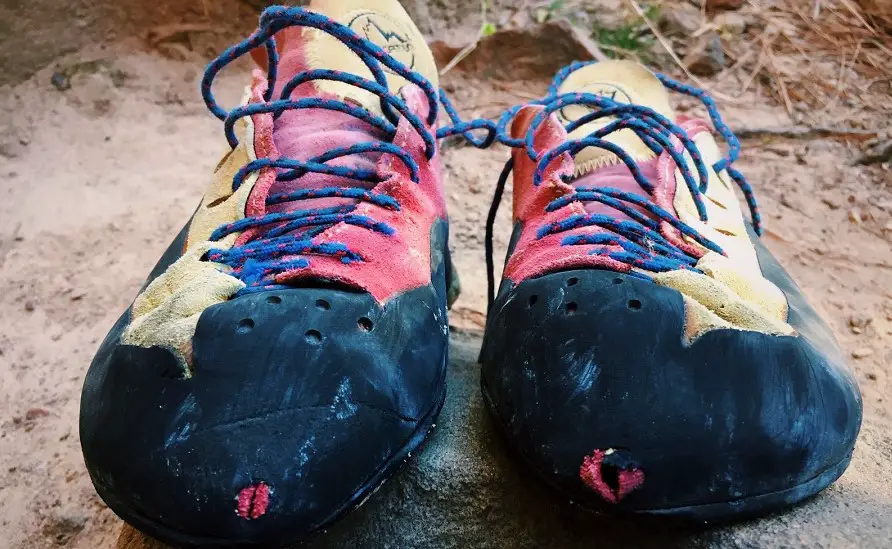
A reminder for all climbers
How you treat your shoes will affect how long they last. Only use climbing shoes when you are climbing if you don’t want to replace climbing shoes soon. It is best to avoid walking or belaying in them since this can hasten unneeded and further degradation.
Airing out your shoes will help to remove any remaining dampness. Take care of the upper material to preserve your shoes in the best condition possible because a resole might not be able to eliminate the scent.
How late is too late to resole climbing shoes?
The integrity of the shoe’s shape begins to be compromised when the rubber on the sole or rand begins to wear through to the inner material. You purchase shoes for the support they provide, precisely for the shape of your foot. The shoes gradually change shape throughout the first few months of break-in to better suit your foot. It feels like wearing different shoes when the shape and fit are altered.
Major shoe damage may undoubtedly be fixed, but it will take longer, cost more, and is much more likely to alter the contour of the shoe. Some resolers won’t accept tasks where there is a larger hole in the rand than a little one.
How many times may a pair of climbing shoes be resoled?
This just depends on your footwear, how you wear them, and how conscientiously you replace the soles when necessary.
The main query is: how many resoles can a shoe withstand before it’s financially advantageous to purchase a new pair? Resolers are typically rather inventive about coming up with solutions to fix shoes.
That is entirely dependent upon you, your spending limit, and the purpose of your shoes.
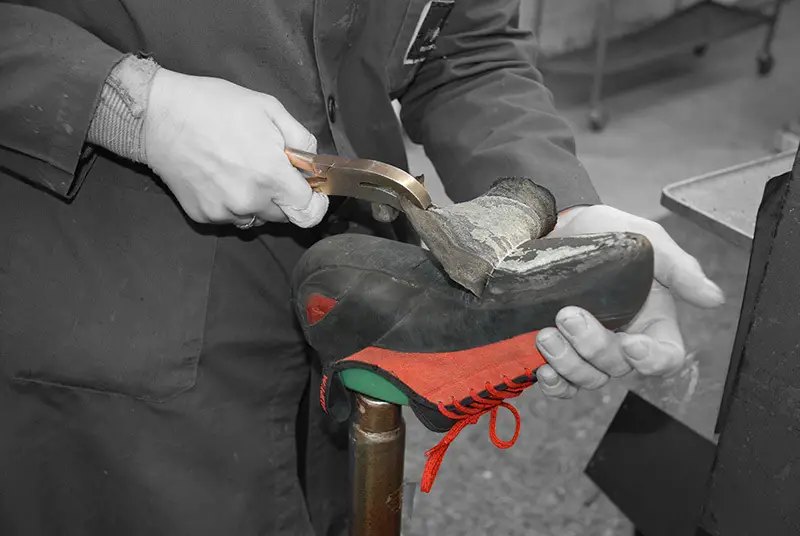
How expensive is resoling climbing shoes?
Let’s imagine you choose one of the well-known, reputable resolers, and they do a great job. Let’s also assume that you send in your shoes before they require any major repair or considerable work, in which case a partial resole will suffice.
That indicates that your initial expenses will be in the neighborhood of $38.
That is your total if you are fortunate enough to live close to a store like this.
For just under $40, you get enough climbing for a brand-new sole.
You would have to mail your shoes if, like many people, you don’t live close to a reliable resoler. You are responsible for shipping to the reseller; the cost varies based on the method.
Businesses would gladly mail your shoes back to you, but they will add a fee of $7 to $10 to cover the shipping costs. That means that if you need to mail your shoes, you should budget an additional $20 or so.
If you resole several pairs at once, obviously this becomes more effective. Companies don’t charge as much for shipping on more pairs, and you can send them all in one package or bag.
But, if you need to mail your shoes, your final cost would be roughly $58.
Is this pricing reasonable? It depends on the climber and the shoes, as usual. Given that a brand-new pair of La Sportiva Solutions costs a whopping $180, obtaining them with a brand-new sole for only $58 if you already own a pair in excellent shape is a wonderful deal. The decision becomes a little trickier if what you’re replacing are some stale, old gym beaters that weren’t even that nice, to begin with.
As an alternative, you can occasionally discover new or barely-used shoes on sale for less than $100, and in a few uncommon circumstances, it might even be more advantageous to go for a brand-new pair.
Resoling has the added benefit of being more environmentally responsible because the more shoes you resole, the fewer pairs you need to discard.
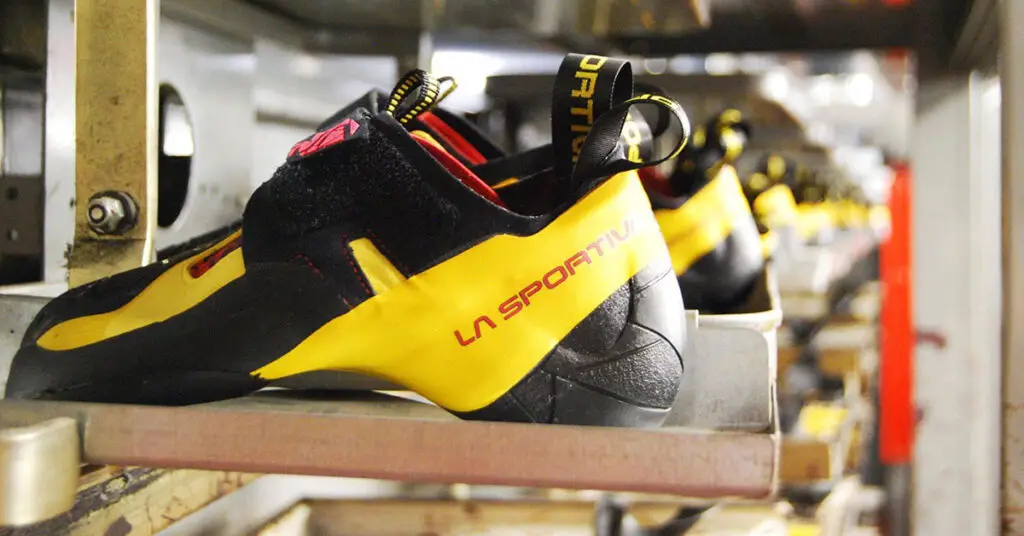
How to resole rock climbing shoes
Most climbers would rather hire someone to resole their shoes than do it themselves, but the DIY approach might also be a useful option.
A new layer of rubber is applied to the shoe during resoling. Rubber is just applied to the toe cap or front portion of the shoe for a half resole. For a full resole, the entire sole is changed out for a new sole. During a rand repair, the rand can be patched up in parts, particularly if the shoe only needs a small region or hole repaired.
Climbing shoe rubber
During the resolving procedure, individual choice is taken into consideration. For your replacement sole, you can typically select a particular rubber kind and thickness. Although there are other different varieties of climbing rubber, Vibram XS Edge and Stealth C4 are the two most popular.
Although softer rubber kinds wear out more quickly, they are excellent for spreading and increasing friction. Although a firmer rubber type is more resilient, you might lose some flexibility in the shoe. It’s best to stay with the rubber type recommended by the original manufacturer if you’re unsure. Moreover, bear in mind that some shoe resolers might not have a large selection of rubber on hand.
Choose between 3mm and 5mm for the rubber’s thickness in your shoes. The best performance is achieved with 4mm, which is the industry standard. Less resoling is required with thicker rubber, although it may cost more. Generally speaking, thicker rubber is preferable for use on worn-out training shoes and for climbing at the gym.
Most resolers can retain or return your shoe to its natural shape if you climb in a more aggressive or downturned shoe. La Sportiva’s more recent edgeless climbing shoes don’t have seams, but you can still resole them. Often, the manufacturer’s manufactured replacement soles are used to resole these shoes.
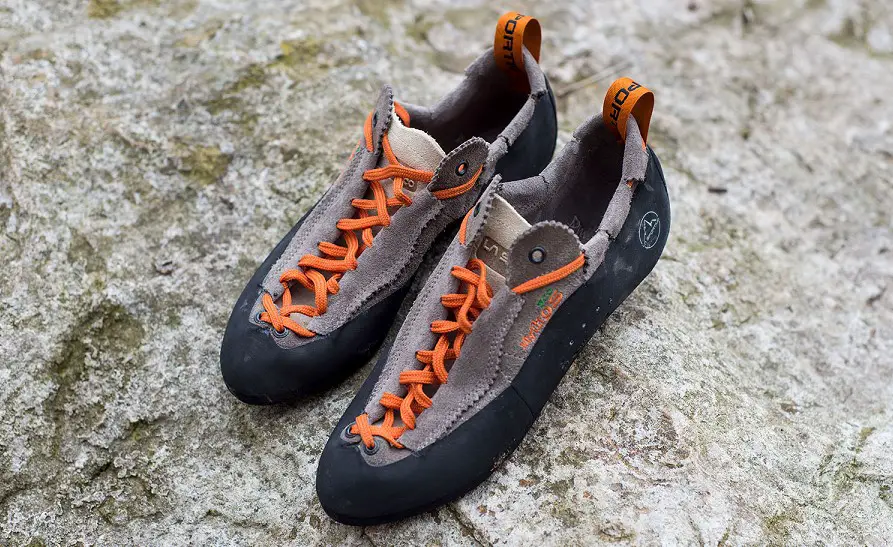
Something to think about
Turnaround times for the resole procedure are typically two to eight weeks. The popularity of climbing has grown recently, which has led to an increase in shoe repairs and a lengthier waiting list.
It’s wise to have a spare pair of shoes or to rent some while you wait. Resolving during the off-season will yield quicker results. If you’re prepared to shell out more cash for rapid delivery, you could also be able to have your shoes back sooner than you anticipated.
If you send in numerous pairs at once rather than just one pair at a time, most resolers will give you a better discount on the cost of shipping.
The rubber, sole, and rand of the climbing shoe can always be altered to suit your requirements. Customizations are more expensive, but they’re worthwhile if you know what you need and want.
Consider selling or giving away your shoes if you have a pair you don’t wear or would prefer to spend the money on a new pair.
Shoe management beta
The majority of resolers (especially the more well-known ones) have longer turnaround times, which typically range from 2 to 8 weeks. The turnaround time is getting longer.
A month or two is a long time to rely on rentals or friends if you only have one pair of shoes. It is preferable to have at least one spare pair on hand so that you can wear them while the soles on yours are replaced. You never quite know when you’ll get your shoes back because resolers try their best (ideally), but they can’t always control how many orders they receive or how long repairs might take.
This is among the major drawbacks of resoling. If you get a brand-new pair, you can begin climbing straight away. Waiting is less of a problem if your rotation includes several pairings. You’ll need to develop a strategy that works for you because many climbers will have multiple shoes for various disciplines.
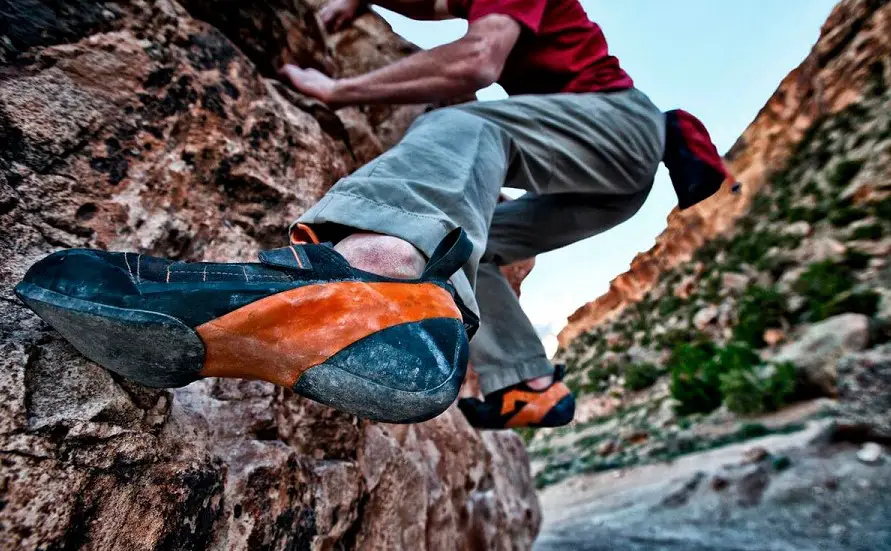
How long does it take to resole climbing shoes?
The wait period for the resole of climbing shoes takes from 3 to 8 weeks on average.
The one drawback of a resole is that there aren’t many companies that can resole climbing shoes. The wait time can be unpredictable depending on how many other climbers may be bringing their shoes in for a resole.
What you could do is:
- When one requires a resole, most people buy a second pair to rotate between
- To receive your shoes back sooner, you could alternatively pay climbing shoe resolers more for quick delivery and turnaround
- To get a speedier turnaround, ask your local resoler when the optimum time is to drop off your shoes (i.e., resoling during the off-peak climbing season)
- Hire shoe rentals
Can I resole my climbing shoes myself?
Yes, if you’re a little handy.
A knife, some sandpaper, and some pliers are required, along with some time for the endeavor. There are obvious limitations, but theoretically, that is a little less expensive than a dedicated resoler.
Initially, you’ll probably need to invest a little extra money on supplies like rubber paint, extra tools, etc. if you want to finish the project well.
Second, most people claim that DIY resoles don’t last as well, even with time and effort. Kits can be a terrific way to learn more about shoes and the resoling process, but they rarely offer better value than a resoler.
What about the upper materials?
After a climbing shoe resole, the top material, which is often composed of leather or synthetic materials, is not altered. The upper will be returned to you by the shoe resoler in the same state that you gave it to them in.
The uppers could feel a little tighter in some circumstances, therefore you might need to stretch the area before using them. The resoler will determine how the top changes. Use the assistance of someone you can trust to make sure your shoes arrive back to you in the best possible shape.
Your best option is to ask your resoler if they can help if the upper of your shoes has holes. That won’t be their first time dealing with it because they have a ton of experience repairing shoes. Alternatively, you might try using synthetic or rubber patches to patch the holes.
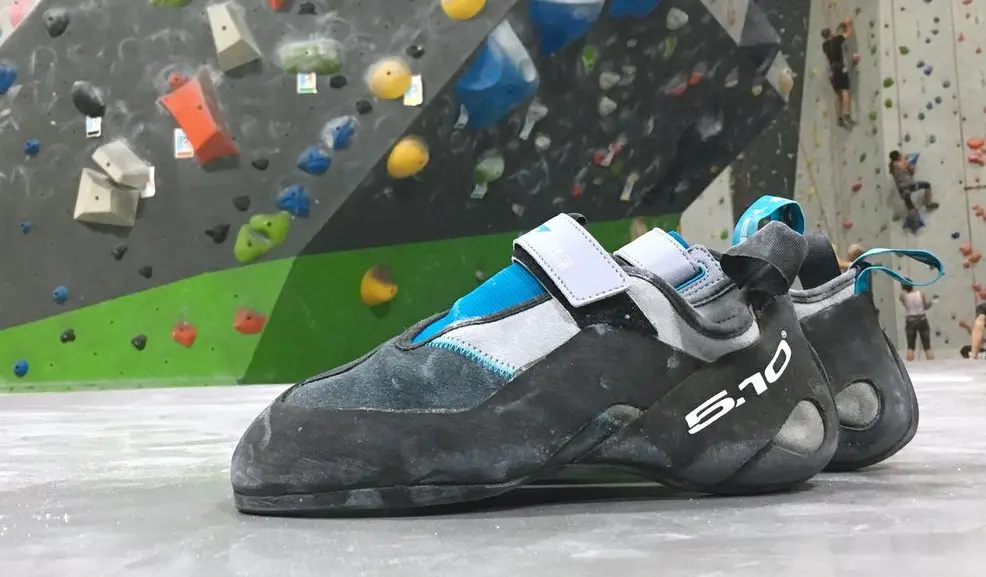
In conclusion
You may contribute to being a responsible and safe climber by understanding why it is important to know when and how to resole climbing shoes. Resoling is a crucial component in maintaining your equipment. It will prevent further harm to your gear or your pocketbook while maintaining your pair of shoes in the greatest shape possible.
Learn More: Resole Your Expensive Rock Shoes

